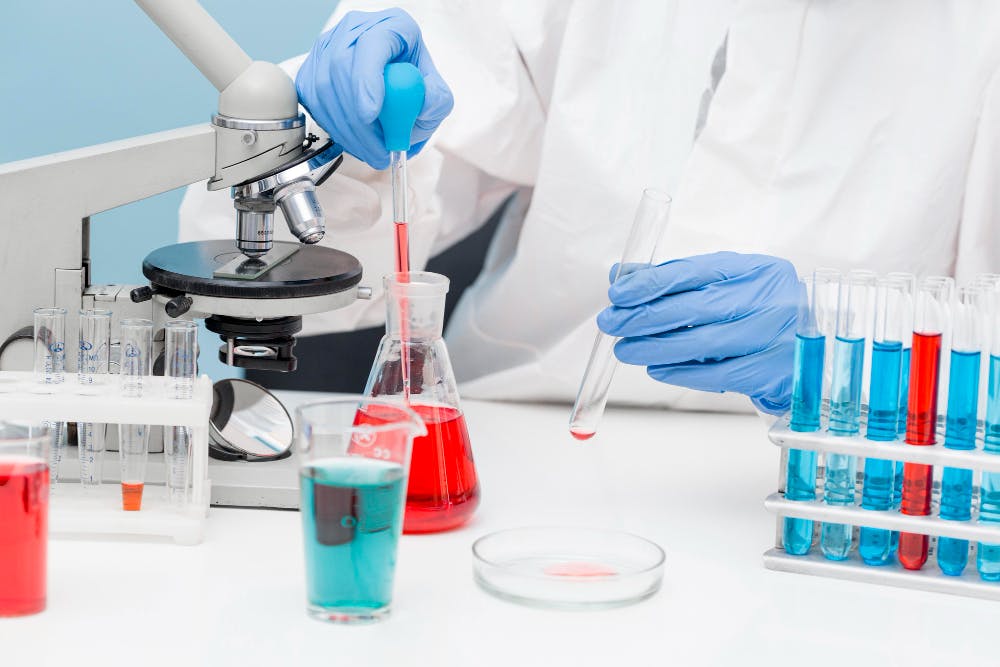How to test plastic properties?
 For varied foods, several packing types are necessary. Foods and packing materials each have their own special features, as explained in finding the best solution: property-based decision making. Before selecting the ideal solution, it is essential to comprehend these characteristics.
For varied foods, several packing types are necessary. Foods and packing materials each have their own special features, as explained in finding the best solution: property-based decision making. Before selecting the ideal solution, it is essential to comprehend these characteristics.
Let's examine packaging more closely. How can the qualities of plastic be tested? The solution is straightforward: test plastics in a lab, measuring each attribute separately. Would you be interested in learning more about these tests?
KEY PLASTIC MATERIAL TESTS:
1. ## FRICTION TESTS For some plastics to be utilised in packaging materials and packaging equipment, precise friction qualities are needed. Why do plastic materials' characteristics alter when they are subjected to friction? The kind of polymer or additive(s) utilised, the manufacturing procedure, the kind of surface structure, and environmental conditions are all to blame for this.
By putting a plastic sample (or two samples) in contact with a metal sample, we may create a device to test the coefficient of friction between plastic and metal.
2. ## TENSILE TESTS Plastics' maximum resistance and elongation at rupture thresholds are calculated using Tensile testing.
How do you do this examination? using a typical test piece under a steady axial tension stress until it breaks. The test results will then be available for you to see on the graphic.
3. ## PEEL RESISTANCE TESTS This extremely helpful test's goal is to gauge an adhesive bond's resistance. In order to conduct this test, two test pieces are used, with one end having two materials that have been joined (or glued), and the other end having the same materials that have not been joined. The average peel resistance will be shown on the resulting graph, demonstrating whether or not the adhesive bond between the two materials is sufficient.
## 4. WELD STRENGTH TEST We perform this test to ensure that the containers are leak-free, which is important for protecting food, particularly those goods that include liquids or require strong barriers. When evaluating the quality of a substance used in food packaging, such as top film, bags, or pouches, this test is crucial.
5. ## CHROMATORGRAPHY GAS TESTS This test is performed to ensure residual solvents in plastics do not exceed 10 mg/dm2 as per EU Regulation No. 10/2011 on plastic materials and articles intended to come into contact with food.
Along with the chemical that serves as the internal standard, this test is capable of detecting up to 15 distinct kinds of solvents. The Regulation's restriction for solvent retention is 20 times lower than ours.
6. ## HOT-TACK TESTS In a previous piece, we discussed hot-tack testing and how it's important for figuring out filling efficiency. This test evaluates how well packing materials function when hot sealing during production, which is the most crucial time.
7. O## XYGEN PERMABILITY TESTS A crucial characteristic for maintaining optimal food preservation is oxygen permeability, which is measured by this test in plastic films and packaging.
8. ## PUNCTURE TESTS Because it helps assess the penetration or piercing strength of plastic materials, this is one of the most significant tests. When choosing between materials, it is crucial to be aware of the maximum tension a material can sustain because punctures can be brought on by the shape of the food or even external reasons.
9. ## TESTS FOR TEAR RESISTANCE This test, which evaluates the force needed to rip multiple-layer or laminated plastic sheets, is carried out at a steady speed. The test results are very helpful in choosing the right kind of material to use for manually opened bags and pouches.
10. ## TESTS FOR PASTEURIZATION AND STERILIZATION Once packaged, foods are often pasteurised or sterilised. This is why the materials used for packing must be able to endure high temperatures for a set period of time. To see how the material responds to particular temperatures for particular amounts of time, this test can be carried out in an autoclave or bath.
12.## BAG PRESSURE TESTS ON PLASTIC In this test, any flaws along the weld lines are looked for by blowing compressed air into a plastic bag or pouch. The bag can also be immersed in water, which produces test results more quickly.
13. ## TESTS FOR ANTIFOG This test is done to see how well a material resists fog and to make sure condensation doesn't build up on the inner surface of the packing material. A sample is kept in a freezer between 7 and 10 degrees for 24 hours while being observed. At Maeon Laboratories, we test a variety of materials using this technique.
14.## MICSCOPY ANALYSIS This kind of test enables the investigation of new materials and the determination of the structure of materials.
15. ## MEASURING THE LAYER This test is very helpful for figuring out how many layers and how thick a film is. The smallest layers can be detected by this test in microns, and it can also tell what kinds of materials are in the specimen.
16. ## CALORIMETRY ANALYSIS USING DIFFERENTIAL SCANNING This testing procedure is used to ascertain what happens when a polymer is heated. It evaluates the properties of thermal transitions such glass transition, fusion, melting, and crystallisation.
Was this article interesting to you? By reading our website Plastic testing laboratory, you can stay informed about technological advancements in our sector.
